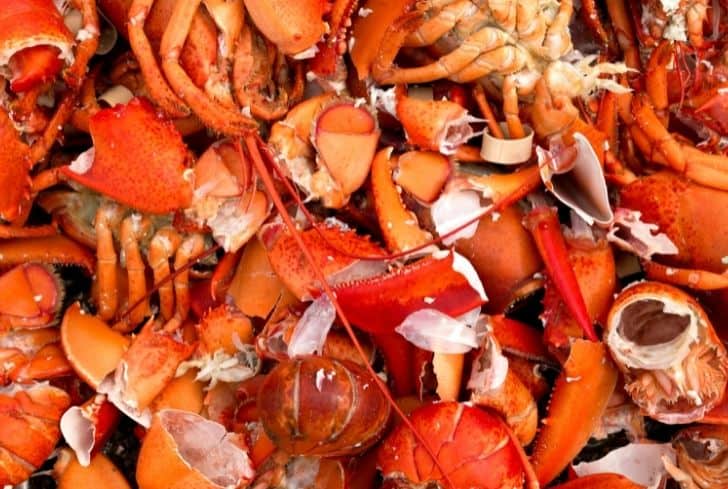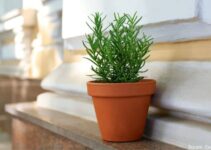Imagine a breakup situation, and your almost-ex tells you, “there are many fish in the sea”, don’t take it literally. But what if you do, and start looking into the fish in the sea. You will realize there are thousands of different species, and one of them is the lobster, a type of shellfish.
People enjoy lobsters as the main course, sandwich filler or added to rich dishes like pasta and mashed potatoes. As shellfish, lobsters have inedible shells that are usually thrown away. However, is it possible to use lobster shells for other use apart from filling landfills? This article discusses lobster shells and how to properly put them to compost.
Are Lobster Shells Compostable?
Yes, lobster shells are completely compostable. Like eggshells, lobster shells in compost bins are considered “greens”. This means they add nitrogen to the composting process, one-half of the necessary components in the composting process.
The shells are rich in calcium, magnesium and phosphates, all necessary minerals that are transferred to the plants through compost. They also contain a carbohydrate called Chitin, which retains moisture and deters harmful insects.
Calcium is important because it helps plants develop strong cell walls and can help prevent blossom end rot and other vegetable diseases. Some plants like cabbage, apples, broccoli, tomatoes, citrus fruits, celery, peaches, potatoes, cherries, peanuts and tobacco, among many others, can benefit from the extra calcium present in the compost after composting lobster shells.
You should not compost lobster shells as a whole as they are. Some preparation ought to be done before they end up in the composting bin.
First, clean them off the lobster flesh by rinsing the shells thoroughly with water. Rinsing them removes the flesh, which when undergoing the decomposition process, will produce odors that will attract pests like rats and raccoons who might interrupt the process. Rinsing the shells also ensures you remove the excess salts which might affect the normal environment inside the composting bin, slowing down the process.
Secondly, crush the shells into smaller pieces, to allow for the entirety of the lobster shells to decompose and at a quicker rate. Remember the shells decompose much more slowly than grass clippings or weeds, crushing or grinding the shells before adding them to the compost ensures they decompose at the same rate as the weeds.
Doing this ensures that the compost is achieved when all the components or ingredients have fully decomposed.
Thirdly, ensure there is a healthy mix of greens versus browns. This means you should add the lobster shells as well as other scraps like rotten or fresh fruits, dried leaves, vegetables, hay, coffee wastes, dried leaves and grass clippings, among others.
Where the correct carbon: nitrogen ratio is achieved, the composting process goes on quite well.
Fourthly, place the crushed shells at the center of the pile where it is hottest, ensuring they decompose quite easily and quickly. If you had ground the shells into a powder, sprinkle it on the compost.
Next, be sure to turn it regularly so that it decomposes easily. Aerating the ingredients also ensures a healthy compost is arrived at. Once you have your compost ready, use it in your garden without worry.
If your soil is suffering from calcium-, magnesium-, or nitrogen- deficiency, the lobster shell compost will do a lot to rectify the situation and fix your soil as well as improve your yields.
Are Lobster Shells Good For Plants?
Yes, lobster shells are excellent for plants. Plants can benefit from the extra calcium present in the shells and include apples, broccoli, brussels sprouts, cabbage, celery, cherries, citrus, conifers, grapes, legumes, peaches, pears, peanuts, potatoes, roses, tobacco and tomatoes.
To unlock the calcium potential present in the lobster shells, it is advisable to compost them first. Especially when mixed with a variety of other materials, you will help the lobsters break down and you will arrive at a more complete fertilizer.
Unfortunately, using the shells might result in some foul odors, which while nasty to humans, are attractive to pests like raccoons. These pests will come over and consume the shells, nullifying your entire process.
This, therefore, means when you are composting the lobster shells, do it in a covered or contained compost bin, or cover them in your pile with vegetation at the center of the pile.
You should also use lobster shells in moderation as if you overdo them, like with any fertilizer, your soil will end up too high in calcium. It is not entirely wrong for plants to grow them in a garden that is too high in calcium, but you should instead use the calcium on other parts of the garden that will clearly be short of sufficient calcium.
All plants need calcium to produce strong cell walls, which in turn helps protect the plants from attacks by pathogens that cause disease. In addition to fighting disease, calcium is also essential for enzyme activity, plant vigor and metabolism.
Lobster shells are also rich in chitin, an important carbohydrate present in these shells and others. Chitin serves as a rich food source for soil microbes which, in turn, provide the soil ecosystem and plants with essential building blocks for healthy growth.
Most recent studies point out that chitin is a good inducer of defense mechanisms in plants and helps them develop healthy immune systems.
Are Lobster Shells Edible?
Unfortunately, lobster shells are not edible. They are too hard and difficult for the human mouth to chew, and swallowing them would be impossible. The thing with lobsters is that no parts are considered poisonous. That is why although they are not edible if you happen to swallow part of the shells, do not worry as you will not get sick or ill.
However, parts of the lobster will contain bacteria, have a poor flavor or have an odd texture. Remember, the shells are not meant for eating; that is what the fleshy part is for.
Why would you want to eat the shells yet there is a whole lot of lobster to eat, encased inside the shell? Claws are not only just as hard as the shells, but are also pointy. If claws were to poke the tongue or cheeks or be swallowed into the esophagus, they would be quite painful.
Some many articles and videos illustrate how to properly devour a lobster but none advocate for the consumption of the shells. Just clean and crush the shells and then compost them rather than trying to eat an inedible part, or having them sit in the trash.
How Do You Dispose of Lobster Shells?
1. Composting them
As this article has advised, the best way to get rid of lobster shells is to compost them. The shells are rich in plant nutrients, making them ideal for use as fertilizer, through compost.
To effectively compost the shells, crush them into a fine powder and then add it to the composting bin alongside other compostable materials like kitchen, fruit and vegetable scraps. After composting the shells, the chitin and calcium in the shells will be highly welcomed by the soil and plants for their nutritional benefits.
2. Making chitosan
Chitosan is a sugar obtained from the hard outer skeleton of shellfish, including crab, lobster, and shrimp and is primarily used for medicine. Chitosan is used for health conditions such as high blood pressure, high cholesterol, obesity, wound healing, and other conditions, although there is little scientific evidence to support many of its uses.
Chitosan will be processed from lobster shells, especially if you have a large quantity of the shells and is a valuable commodity.
3. Making it into other foods
Although lobster shells are inedible, they can be made into other foods. For instance, you can make broth or stock from lobster shells. Much of the foods you can make from lobster shells is explained in the next sub-chapter of this article, below.
4. Making decorative items
You can also make beautiful decorative products or items that can be placed inside the house or be used to beautify a spot somewhere. All you need is to clean the shells and then color them depending on your preferences.
If you need to cut them to fit certain spots, do it but gently, to avoid cracking in places that will not help the point. It is actually a beautiful way to pass time and get creative with your children.
5. Making golf balls
This will sound interesting, but hear me out. There is a student and professor at the University of Maine who developed a golf ball using ground-up lobster shells mixed with a glue-like substance for its core.
The shell was made out of naturally derived biodegradable materials although the two never gave specifics as they did not want to give away these secrets. The ball was the same size and weight as a standard golf ball but is intended for use on cruise ships or at driving ranges that are on lakes or the ocean.
Although dumping golf balls into the sea is prohibited under international law as the majority are made from non-biodegradable materials, the lobster golf ball is completely biodegradable and disintegrates in the water within three weeks.
What Can You Cook with Lobster Shells?
According to Food and Wine, there are like eight types of foods that can be made from lobster shells. These foods are made or enriched by the use of lobster shells. They are Lobster Bouillabaisse, Farfalle with Lobster, Favas and Peas, Lobster Broth with Porcini, Lobster with Fideos, Lobster Pappardelle with Chive Butter, Lobster Américaine with Rice and Haricots Verts, Lobster Fisherman’s Stew, and Lobster Salad.
Food and Wine do not give a detailed way of making or enriching these foods but one can take a wild guess as to how they are made. You will primarily make lobster shells to make a broth and then enrich these foods.
The lobster shell broth is the main dish that can be made from lobster shells. To make the broth, first, break the lobster shells into small pieces. Then open the bodies and remove the grey, feathery gills, and the sand sac from between the eyes and then crush the bodies so they fit in a large stew pot.
Heat olive oil and sauté the onions, celery, and carrots over medium-high heat for 3 to 4 minutes in a large pot. Add the shells and cook them for two to three minutes.
Then, add the garlic, fennel, and mushrooms and mix them well and cook for 2 to 3 minutes. Add the parsley, bay leaves, and tomatoes, stir well and then add the wine or dry sherry.
Stir and cook until the alcohol largely burns off the wine, for about 3 to 4 minutes. Then add enough water to cover everything by 2 to 3 inches. Bring them to boil and immediately turn down to a simmer.
Simmer gently for at least 90 minutes for it to be full-flavored. Taste test and add salt as needed.
Finally, turn off the heat and allow the mixture to cool slightly before straining it through a fine-meshed sieve with a piece of cheesecloth set inside it. you can now store the stock in the fridge for up to 50 days or freezer for up to three months in fridge-safe containers.






